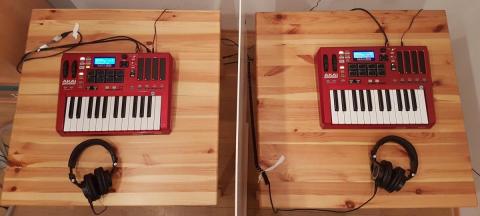The sound of silence: an EEG study of how musicians time pauses in individual and joint music performance

Anna Zamm, Stefan Debener, Ivana Konvalinka, Natalie Sebanz, Günther Knoblich
Pauses are an integral feature of social interaction. Conversation partners often pause between conversational turns, and musical co-performers often pause between musical phrases. How do humans coordinate the duration of pauses to ensure seamless interaction? A total of 40 trained pianists performed a simple melody containing fermatas (notated expressive pauses of unspecified duration) first alone (Solo) and then with a partner (Duet) while electroencephalography (EEG) was recorded. As predicted, Duet partners’ tone onset synchrony was reduced for tones following pauses. Pauses were shorter in Duet relative to Solo performance, and synchrony of partners’ Duet tone onsets was enhanced for tones following shorter pauses. EEG analysis revealed classic signatures of action preparation during pauses, namely decreases in the power of cortical beta oscillations (13–30 Hz, event-related desynchronization ERD). Beta ERD did not differ between pauses in Solo and Duet performance, but was enhanced for shorter relative to longer pauses, suggesting that reduced pause durations in Duet performance facilitated a neural state of enhanced action readiness. Together these findings provide novel insight into behavioural strategies by which musical partners resolve coordination challenges posed by expressive silence, and capture a clear neural signature of action planning during time-varying silences in natural music performance.